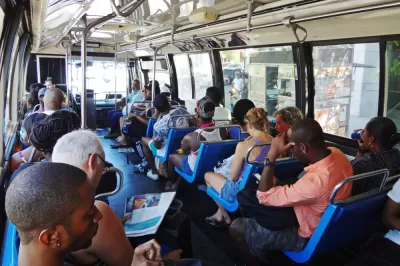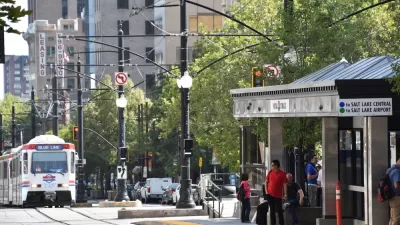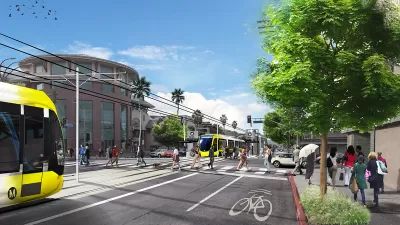Important changes are necessary to promote racial equity in transit policy, governance, and agency recruitment, according to Darnell Grisby, director of policy development at the American Public Transit Association.

Seeing the historical impacts of the lack of investment in public transit and racist transportation policy, Darnell Grisby set out to make a change. Grisby, the director of policy development and research at the American Public Transit Association, writes about childhood and familial experiences with inequitable transportation systems through the lens of the current reckoning with racial discrimination: "More than 50 years ago, Martin Luther King, Jr. called urban public transportation 'a genuine civil rights issue,'" writes Grisby, "The nation’s infrastructure investments have promoted systemic racism, impacting generations of African Americans." Grisby notes three ways to change the trajectory of transit policy's relationship to race:
- Change the structure of transit governance to address the needs of the most frequent users of transit: communities of color.
- Improve any policy that impacts transit advocacy with "effective provision of all municipal services" in mind, not just the ones that immediately effect transit systems. Understand the connection between seemingly disparate policies.
- Focus less on work experience when hiring for high-level positions in transit agency recruitment to give a new generation of highly qualified candidates of color an opportunity to use their skills as well as personal understanding of transit ridership.
FULL STORY: To Fight Racism, Transit Has a Key Role

Maui's Vacation Rental Debate Turns Ugly
Verbal attacks, misinformation campaigns and fistfights plague a high-stakes debate to convert thousands of vacation rentals into long-term housing.

Planetizen Federal Action Tracker
A weekly monitor of how Trump’s orders and actions are impacting planners and planning in America.

In Urban Planning, AI Prompting Could be the New Design Thinking
Creativity has long been key to great urban design. What if we see AI as our new creative partner?

King County Supportive Housing Program Offers Hope for Unhoused Residents
The county is taking a ‘Housing First’ approach that prioritizes getting people into housing, then offering wraparound supportive services.

Researchers Use AI to Get Clearer Picture of US Housing
Analysts are using artificial intelligence to supercharge their research by allowing them to comb through data faster. Though these AI tools can be error prone, they save time and housing researchers are optimistic about the future.

Making Shared Micromobility More Inclusive
Cities and shared mobility system operators can do more to include people with disabilities in planning and operations, per a new report.
Urban Design for Planners 1: Software Tools
This six-course series explores essential urban design concepts using open source software and equips planners with the tools they need to participate fully in the urban design process.
Planning for Universal Design
Learn the tools for implementing Universal Design in planning regulations.
planning NEXT
Appalachian Highlands Housing Partners
Mpact (founded as Rail~Volution)
City of Camden Redevelopment Agency
City of Astoria
City of Portland
City of Laramie





























